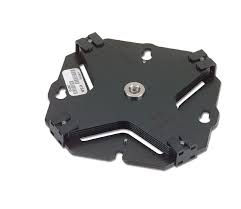Metal Stamping

What is Metal Stamping?
Stamping is a metalworking process in which flat sheet metal, in either blank or coil form, is placed into a press where a stamping tool forms the metal into a net shape. Typically performed on cold metal sheet, stamping encompasses a variety of forming processes — such as blanking, punching, bending, flanging, embossing, and coining.
Stampings can be produced in a single-stage operation, where every stroke of the press produces the desired sheet metal part, or through a series of stages. Progressive stamping dies are commonly fed from a coil of sheet metal into a press at a predetermined feed length. The number of stations in the die is determined by part complexity and desired shape.
How Does Metal Stamping Work?
Metal stamping can involve a number of operations, performed simultaneously or in varying sequence. Examples include:
Bending - The material is deformed or bent along a straight line.
Flanging - The material is bent along a curved line.
Embossing - The material is stretched into a shallow depression. Used primarily for adding decorative patterns. See also Repoussé and chasing.
Blanking - A piece is cut out of a sheet of the material, usually to make a blank for further processing.
Coining - A pattern is compressed or squeezed into the material. Traditionally used to make coins.
Drawing - The surface area of a blank is stretched into an alternate shape via controlled material flow. See also deep drawing.
Stretching - The surface area of a blank is increased by tension, with no inward movement of the blank edge. Often used to make smooth auto body parts.
Ironing - The material is squeezed and reduced in thickness along a vertical wall. Used for beverage cans and ammunition cartridge cases.
Reducing/Necking - Used to gradually reduce the diameter of the open end of a vessel or tube.
Curling - Deforming material into a tubular profile. Door hinges are a common example.
Hemming - Folding an edge over onto itself to add thickness. The edges of automobile doors are usually hemmed.
Piercing and cutting can also be performed in stamping presses. Progressive stamping is a combination of the above methods done with a set of dies in a row through which a strip of the material passes one step at a time.





Advantages of Metal Stamping
Metal stamping offers many advantages, such as:
Part strength
Durability
Easily Transportable
Malleability
Repairability
Material options and robust supply chain
Low tooling costs
Fast time to market
Versatility of quantity and requirements
Variety of fabrication and finishing processes
Metal Stamping Materials
Many different materials can be used in metal stamping, including:
Aluminum grades 1100 / 3003 / 5052 / 6061
Stainless Steel grades 304 / 316 / 410 / 430
Carbon Steel
Copper
Brass
Bronze
Titanium
Nickel
Tin

Metal Stamping Applications
Metal stamping is used in a wide range of industries and products. Some examples include:
Aerospace: Components used in key functional areas of aerospace equipment including engine parts, exhaust, filtration and control systems
Industrial: Flow and moisture sensors, agricultural equipment, commercial door hardware, packaging equipment, heating plates
Medical: Blood analyzer brackets, cart storage trays, sterilization instruments, device chassis
Technology: Communications weldments, ATM chassis, lottery machine enclosures, audio housings, spring plates
Transportation: Brake discs, pedal guards, seat heater components, fitness controls, license plate brackets, mirror holders, polished heel guards
.png)
































